
The Donington Historic Festival is now in its second year, and for 2012 it has continued the theme of bringing a wide variety of classic racing series to the public combined with open access to all the paddocks – and open arms for as many car clubs as they could fit onto the in-field. Like the resurgent Donington Park track itself, over its two days the Historic Festival represented the joining of old, not so old and really quite new. Over 300 iconic racing cars took part, spanning seven decades of competition.
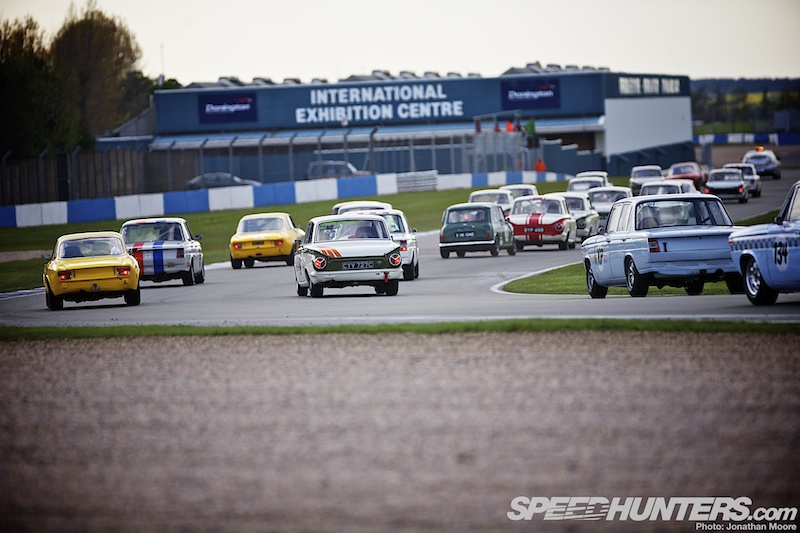
The Saturday had included pre-war sportscars, ’60s Le Mans cars and ’70s touring cars – and plenty of rain; I’d been at the Auto Italia event at Brooklands (more on that later this week), but still had an enormous amount to look forward to on the Sunday, including hordes of ’60s touring cars…
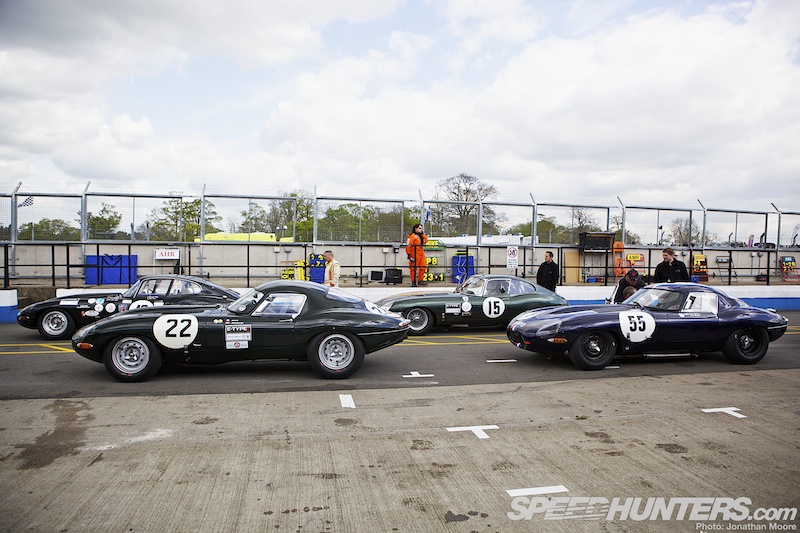
…an armada of Jaguar E-Types…
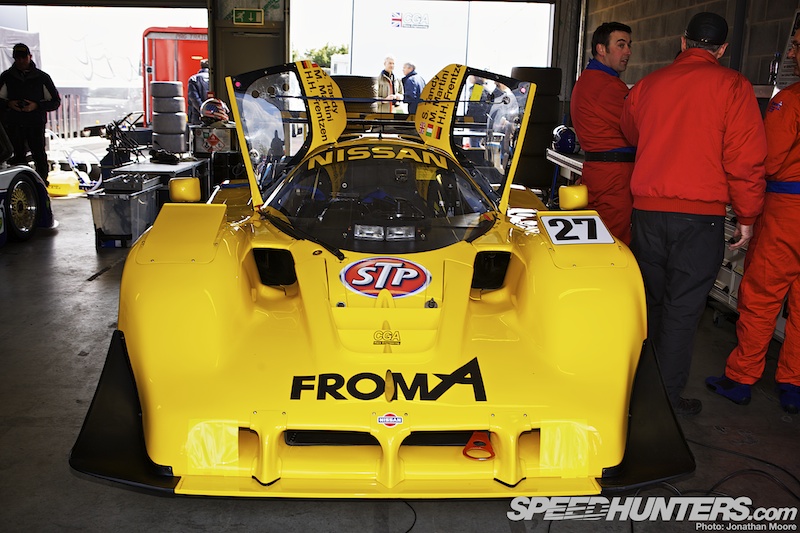
…over 20 Group C prototype sportscars (Porsches, Jaguars and Nissans, plus a Lancia LC2, Aston Martin AMR1 and Sauber-Mercedes C9)…

…over-powered, under-tyred ’50s sportscars and more.
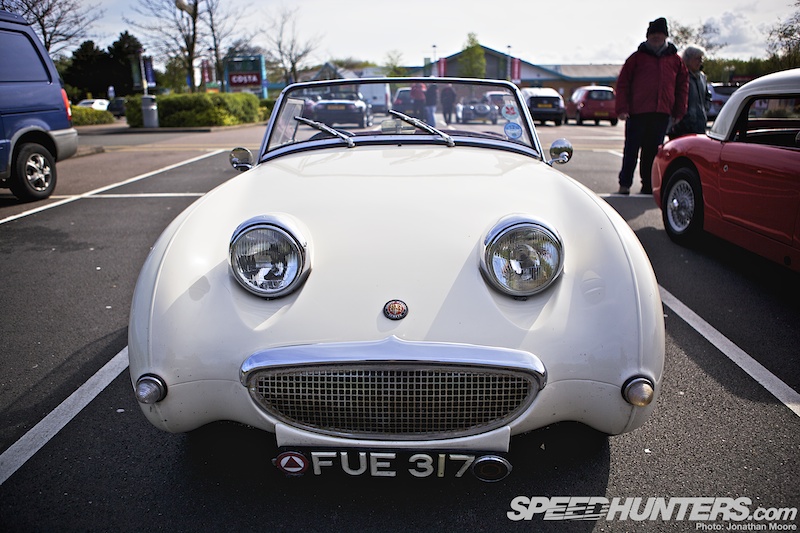
Like with the Goodwood Revival and other events where taking part is half the fun, even travelling to something like the Festival is an enjoyable experience. There’s an en-route camaraderie which is amplified when the car clubs are an integral part of the proceedings. It’s easy to spot the friends driving in convoy, last-minute signalling for a turning as the lead car follows their GPS, or groups of similar cars line-astern on the motorway. At the local motorway services about half an hour south of Donington a gaggle of Austin Healey Sprites had stopped for a final pre-event coffee: the Frogeye is surely the happiest looking car ever made. Look at its smiling face!
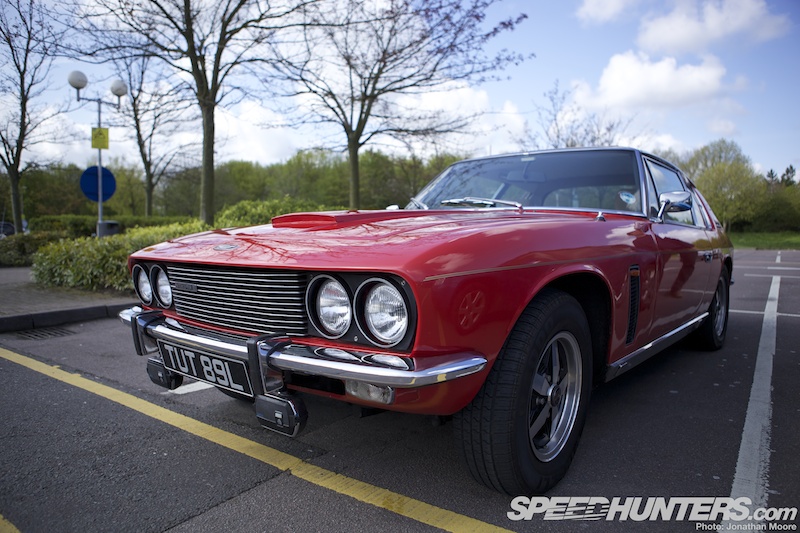
They were just one of many groups of marque enthusiasts who were travelling up to the Festival: a quartet of MX5s were just pulling out of the services, and this Jenson Interceptor was getting plenty of admiring looks.
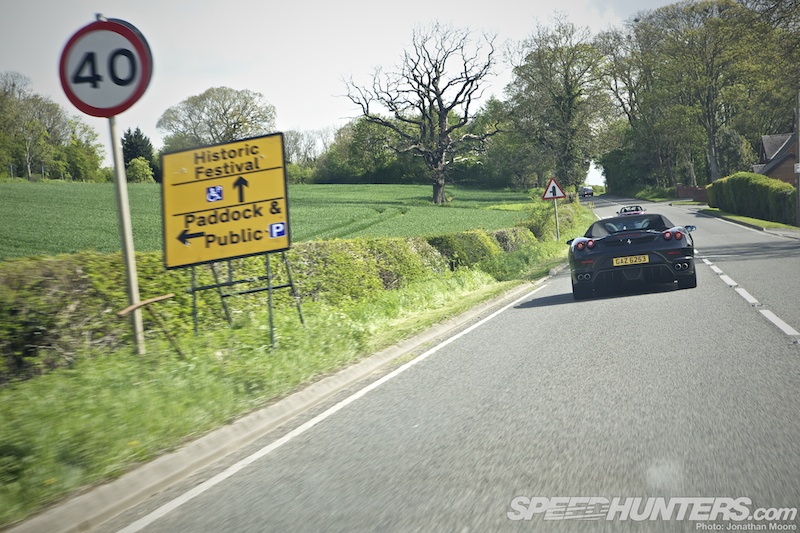
On the final run through the rolling Derbyshire countryside I joined a train of cars typical of the event itself, with an MX5 leading an early-’60s Corvette Stingray and Ferrari 430 – old and new with a common goal. Bright sunshine, growling engines and the knowledge that there was great day ahead.
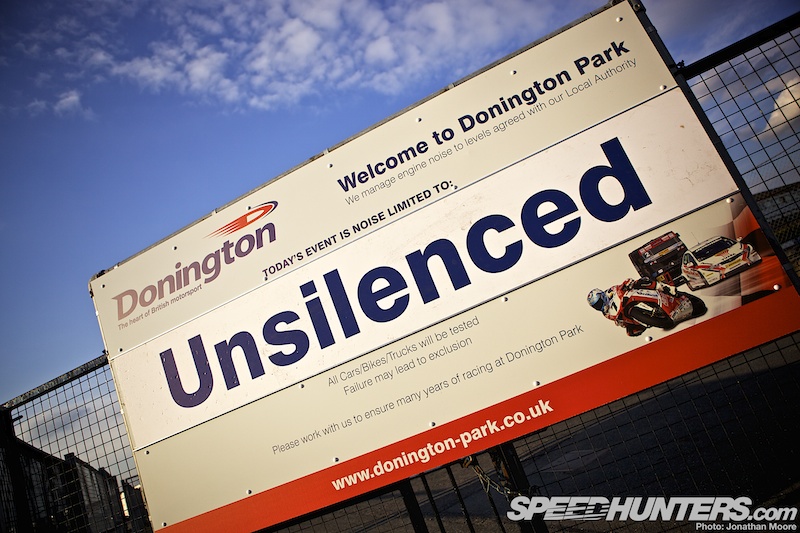
When this is the sign at the gate, you know everything is right with the world. Even better, despite torrential rain on the first day of the Festival – and also on the motorways heading towards Donington on Sunday morning – at the track itself a protective umbrella of good-feeling banished the clouds and brought on the blue skies and big crowds.
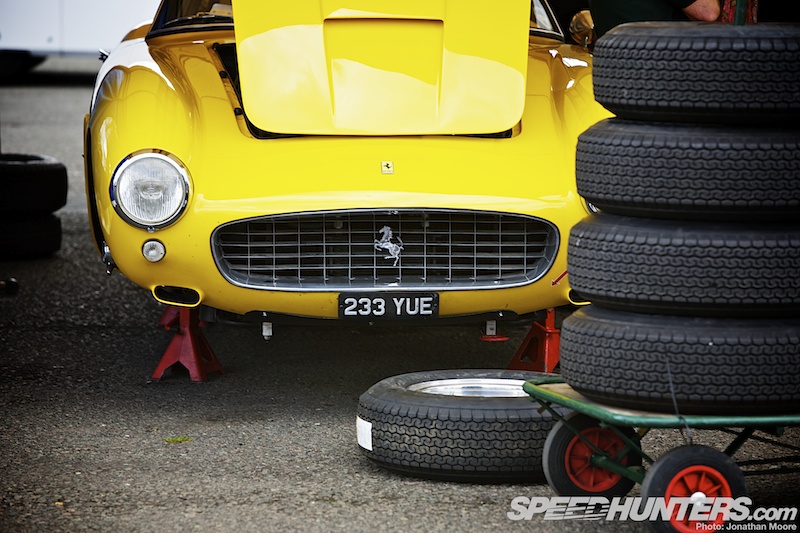
There’s a carefully cultivated vibe at the Donington Historics: there is some crossover with the aforementioned Revival, in competitors as well as atmosphere, but there’s a deliberately more laid-back approach to the Festival. The Revival is undoubtedly an amazing event, but its concentration on period and old-school ties can sometimes be a bit intimidating. With Donington, being inclusive is key.

The gamut of cars that the Festival includes is also far wider – including much more modern machinery that covers right up until the mid-’80s.
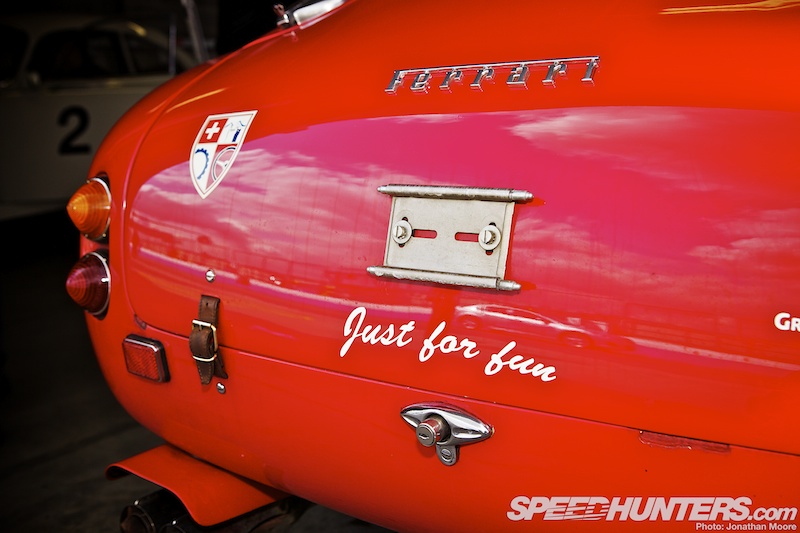
Historic racing is incredibly popular at the moment, and with the sheer amount of racing metal available it’s almost more of a problem finding enough events than it is enough cars. There’s less pressure in historics (though you wouldn’t believe it from some of the overtaking moves), it’s cheaper (though you wouldn’t believe it from the quality and quantity of race trucks and motorhomes accompanying the cars) and though you can win a trophy, it’s the taking part that counts. It is, after all, just for fun.
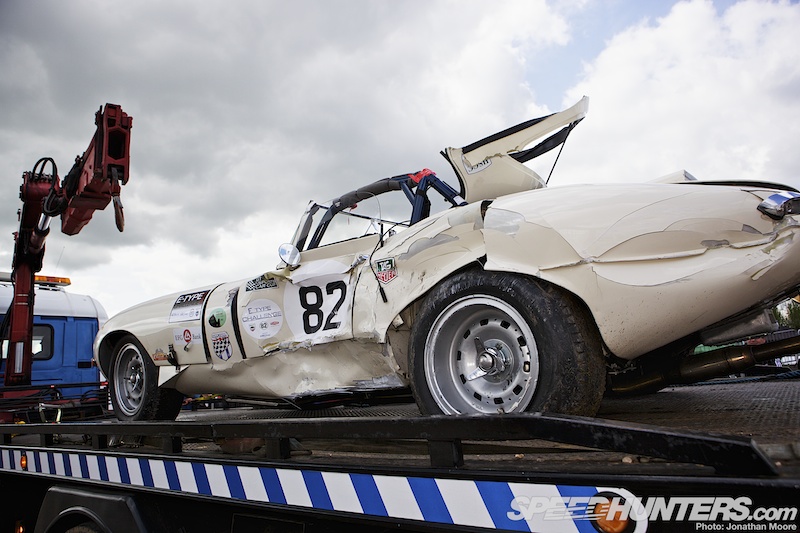
That said, what took place out on track at Donington Park was no set of demonstration runs. The racing was wheel to wheel and hard-fought – often with very expensive conclusions, though thankfully without major injury.
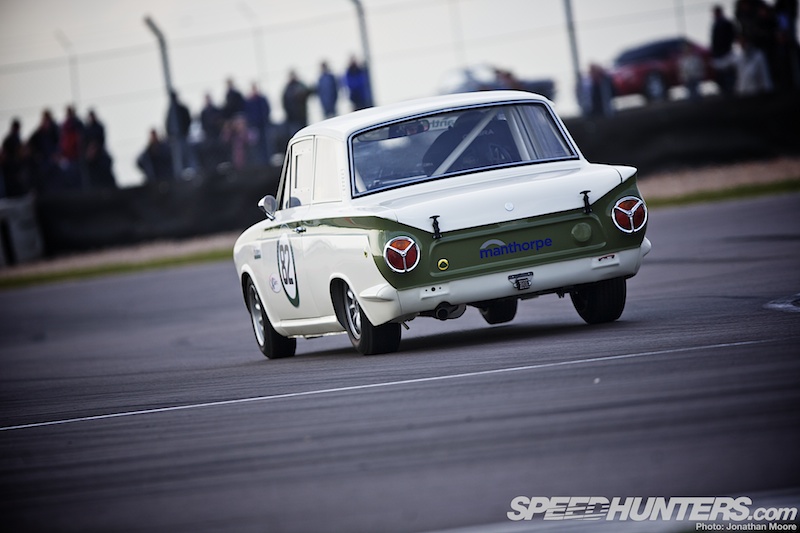
Competition and four-wheels go together. However, Group Cs and single-seaters aside, the majority of cars out on track could be more accurately described as three-wheelers!
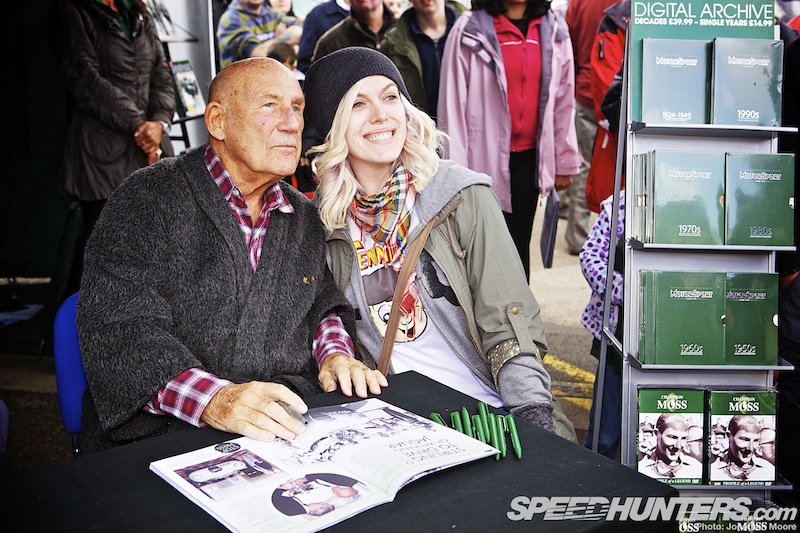
Taking pride of place at the Festival was Sir Stirling Moss, Britain’s racing legend. Though now retired from active competition, he continues to draw the crowds everywhere he goes – and still has a way with the ladies… He now has a series named in his honour, for genuine pre-1961 sportscars in longer, two-driver endurance race, which would also be racing on the Sunday at the Festival.
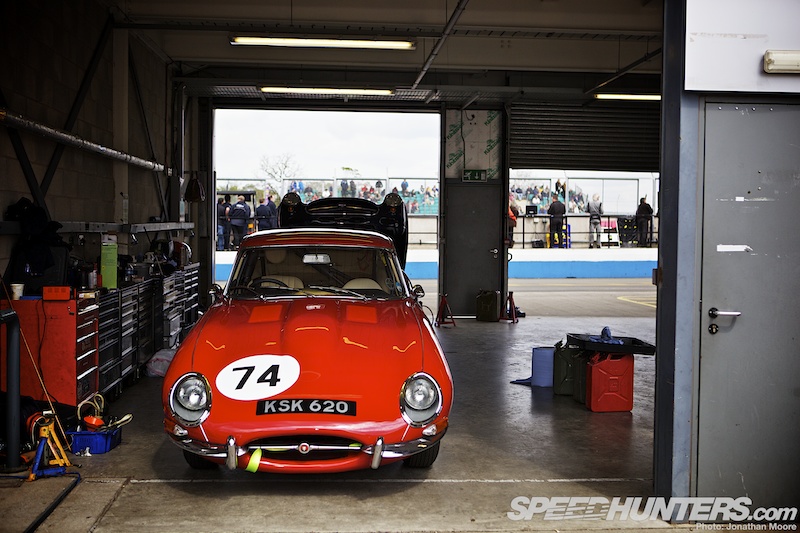
Although the pit garages themselves were mostly out of bounds to the public because of the live pit-lane, almost all of them were left open at the rear for people to watch the work going on inside and to catch glimpses of the incredible line-up of cars.
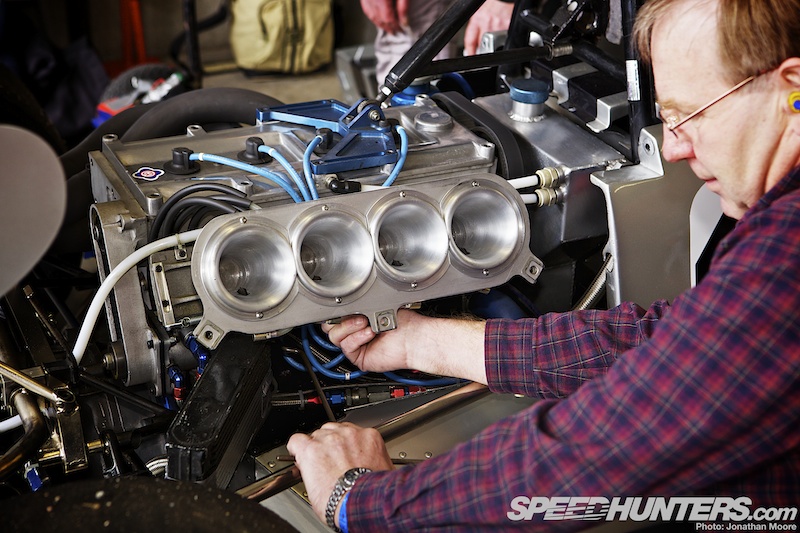
There was also the aural assault to back up the visual stimulation. The deafening sounds of engines blasted around the garages throughout the day, as throttles were checked, valves opened and trumpets cleared.
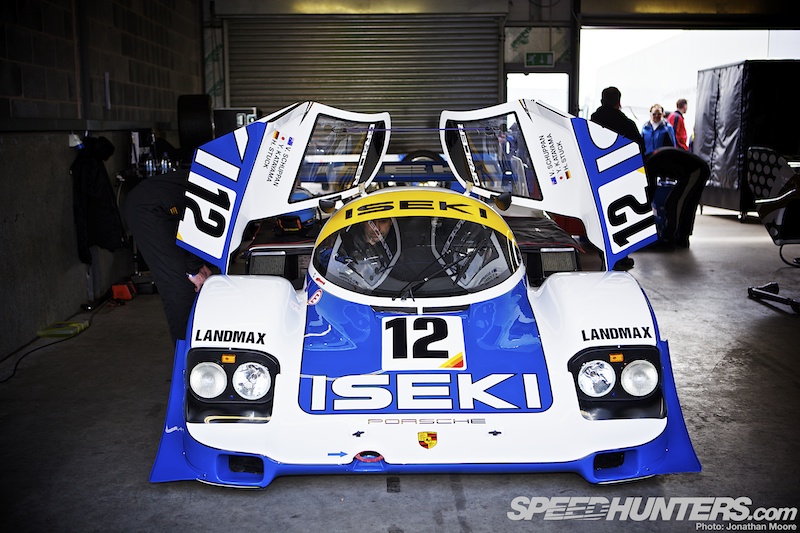
At the far end were the Group C monsters, the big draw for the weekend. It was impossible not to be overawed by these machines. Their complexity and aerodynamic profile were such a contrast to all the other cars present.
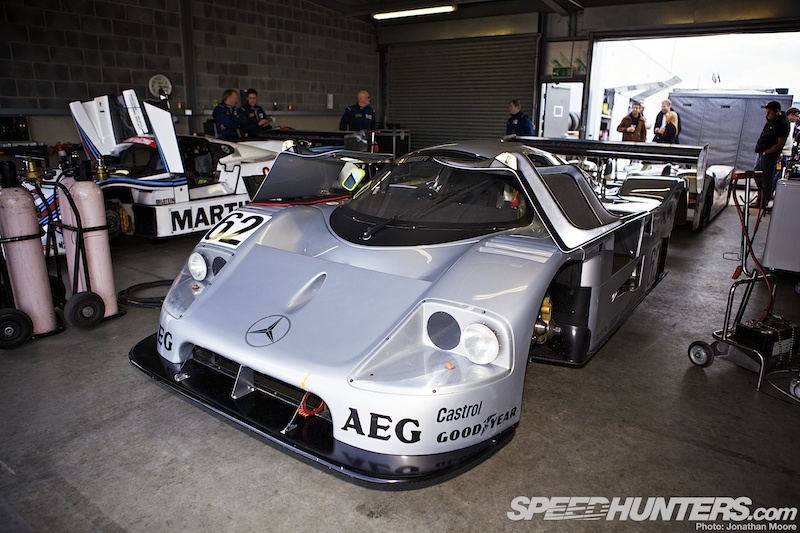
There were actually more Group C cars here than raced: tucked up behind the C9 was a Peugeot 905, and the Leyton House Porsche 962 was in another garage further up the pit-lane – neither made it out. These are not simple cars to run, so even getting them out on track requires a huge logistical effort.
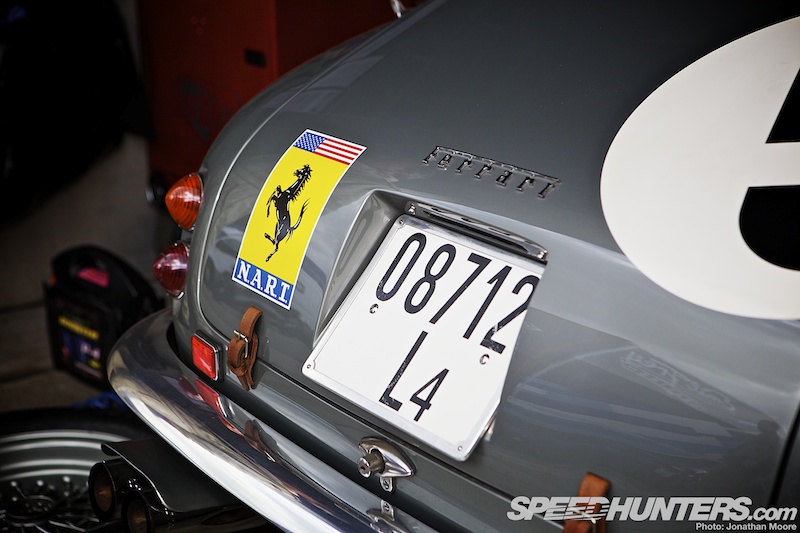
Some of the most expensive and exclusive ’60s sportscars lined up next, including this North American Racing Team Ferrari 250 GT Berlinetta SEFAC from 1961.
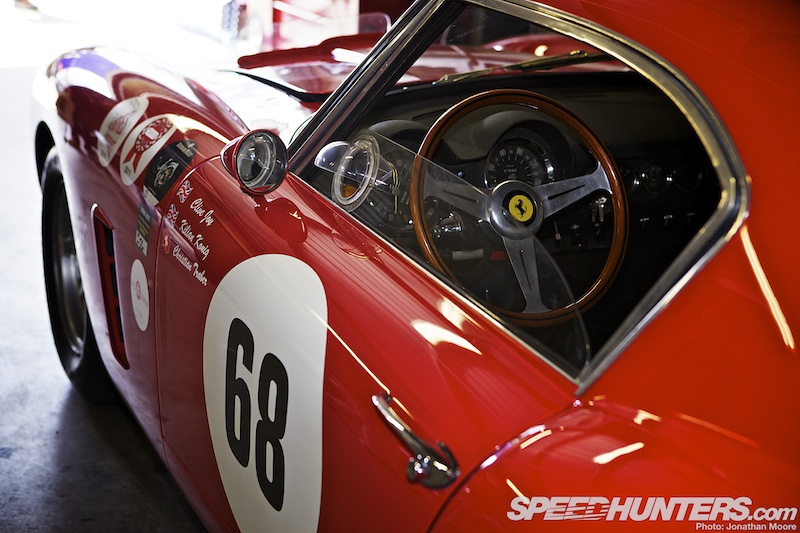
Two more 250 SWBs were parked up in the neighbouring garage.
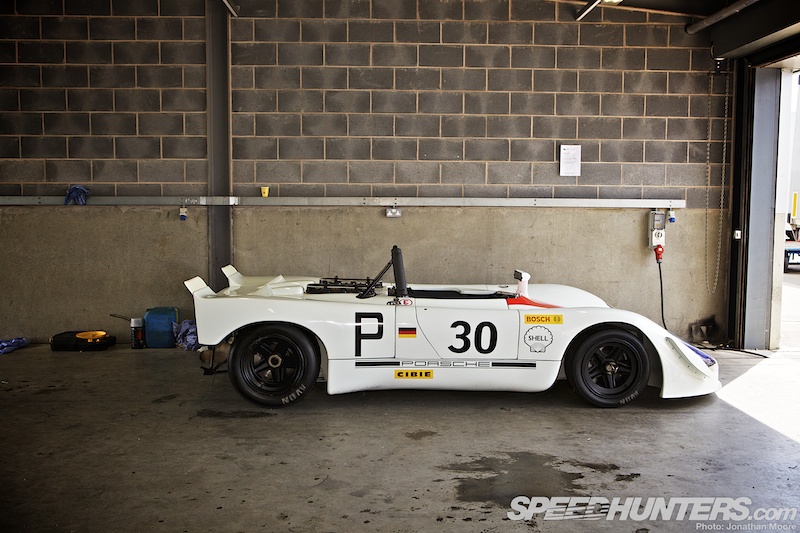
The last couple of cars from the previous day’s ‘1000km’ race (actually a 250km race emulating the original classic distance events) were also dotted around the central garages, like this Porsche 908/2. With most of the garages cleared out, this meant there was a great opportunity to get right up close.
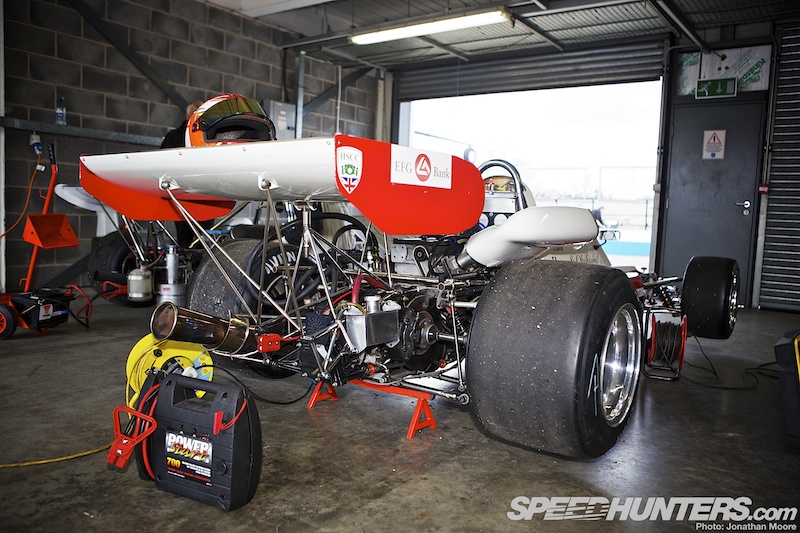
Single-seaters were represented by Formula 2 cars from the series’ heyday between 1967 and 1978. They were located at the pit-lane entry garages, with four or more crammed into each double garage. Their spindly welded frames belie the power they put out: even with the fat rear slicks drivers would struggle to put the power down out of Donington’s chicane and slower corners.
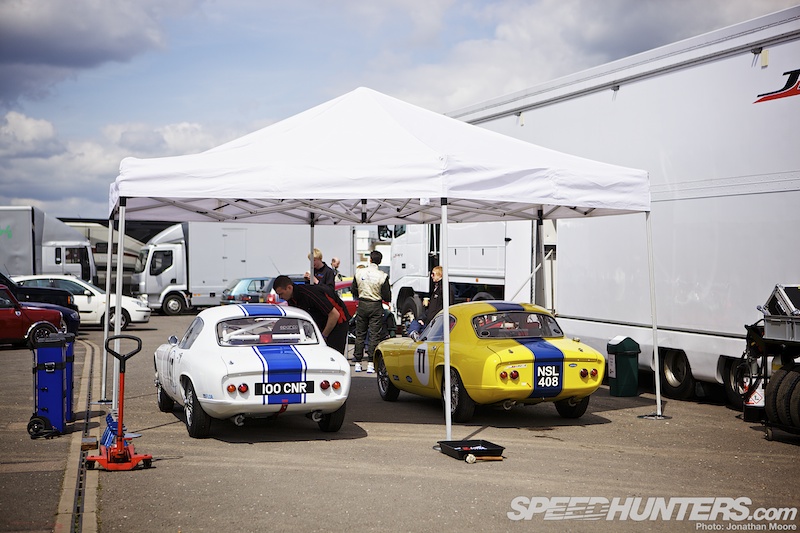
Out in the paddock you could wander around freely to your heart’s content. Teams were usually more than happy to chat away about their cars in between sessions.
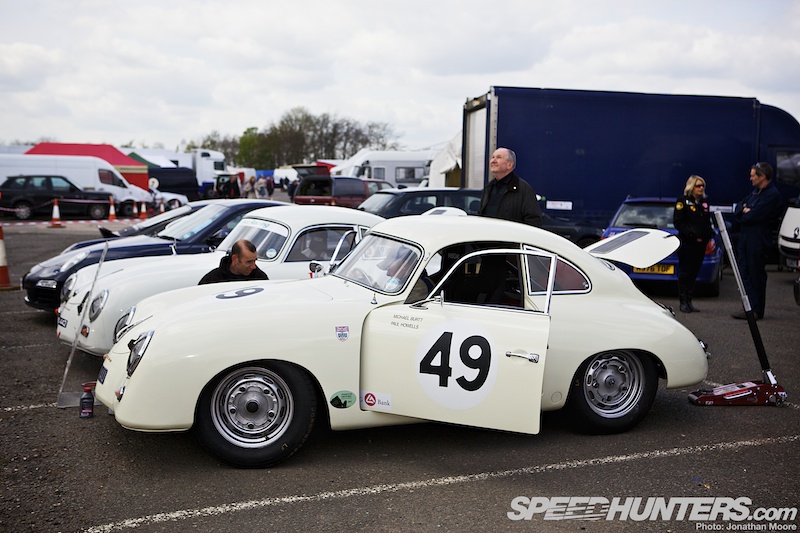
You would stumble across cars with impressive pedigrees, like this Porsche 356A that was raced by Jim Clark. He drove it in October 1957, racing it three times in one day and racking up his first major race win. Not only did he race it, but it was also Clark’s daily driver!
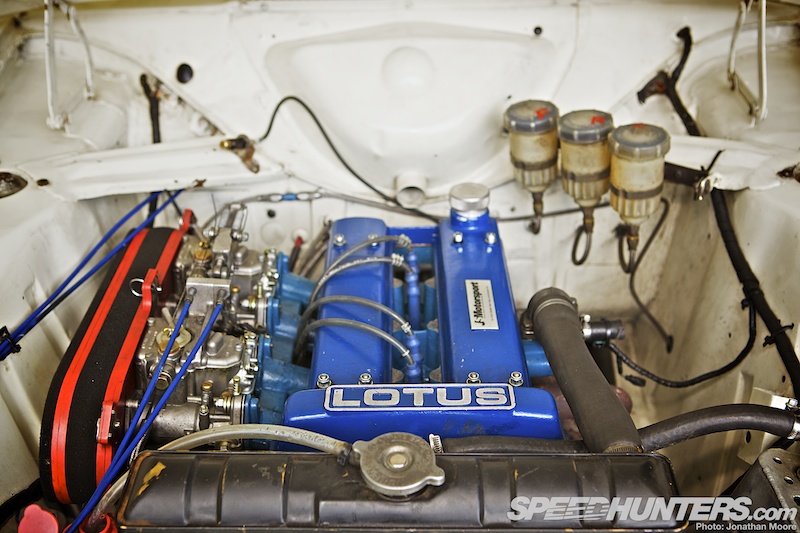
Another car that is closely associated with Jim Clark is of course the Lotus Cortina: he won the British Touring Car Championship in 1964 and ran a Cortina in the 1966 RAC Rally.
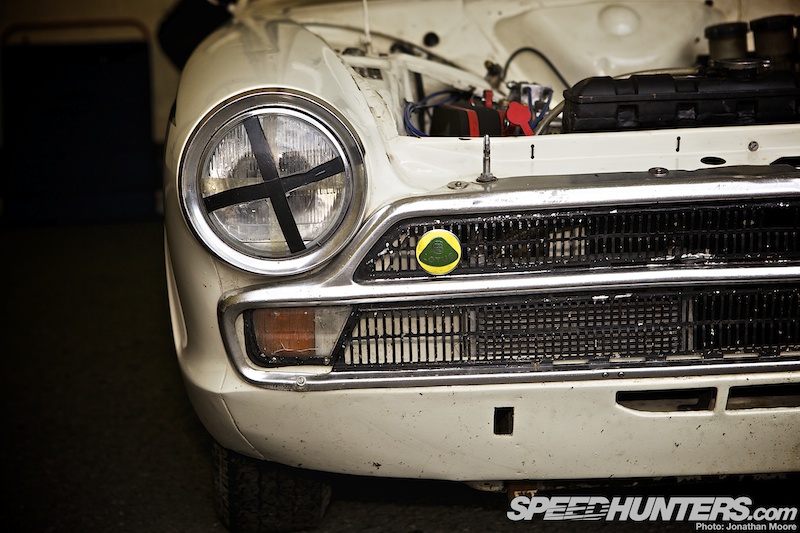
As with the Jaguar E-Types, the Cortinas were represented in great number: 15 were out in the Pre-1966, under-2-litre class race.
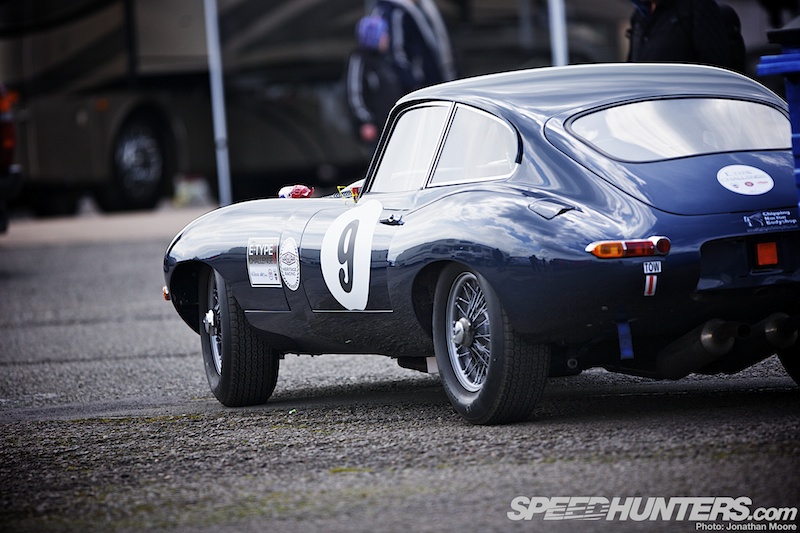
There was theoretically a plan as to how all the series were laid out in the paddock, but in reality there was a glorious sense of chaos. Cars were dotted all over the place.
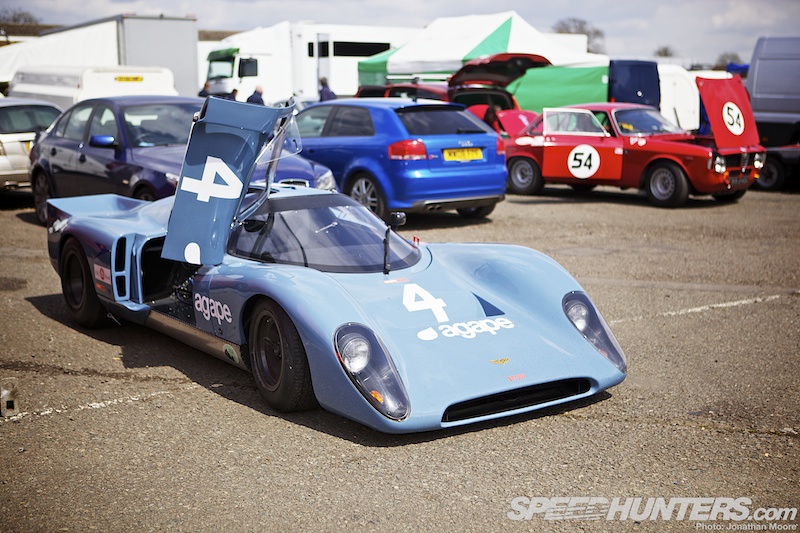
With many teams running different cars in multiple races, you’d find sports prototypes next to touring cars, or single-seaters next to modern supercars. A glorious mishmash of styles and eras.
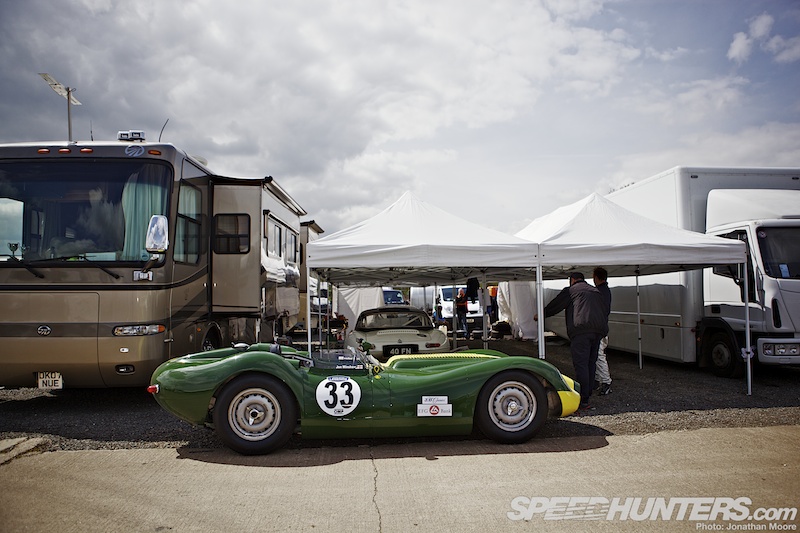
It’s just as well that the day didn’t have a noise limit: Cars like the V8 Lister Knobbly produce a fearsome sound from their big-block Chevy V8s. At Donington Park, complaints about noise are rendered even more facile than normal, as there’s a commercial airport right by the track…
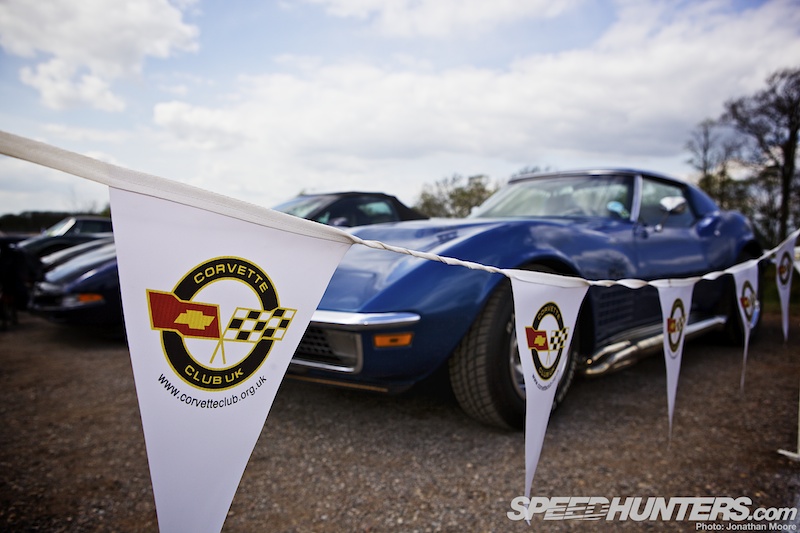
As if the sprawling race paddocks and the pit-lane weren’t enough, the in-field of the track was full to bursting with car clubs to savour. Over 35 were represented, covering every major marque – and several that were completely unexpected!
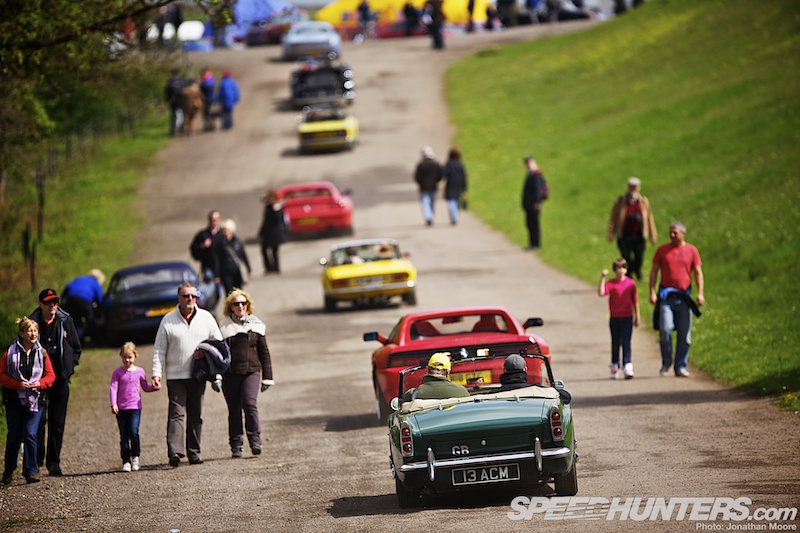
The car clubs got their moment to shine on track each lunchtime, with a mass demonstration of invited participants streaming around Donington’s curves following a run by Stirling Moss in his 1952 Jaguar C-Type.
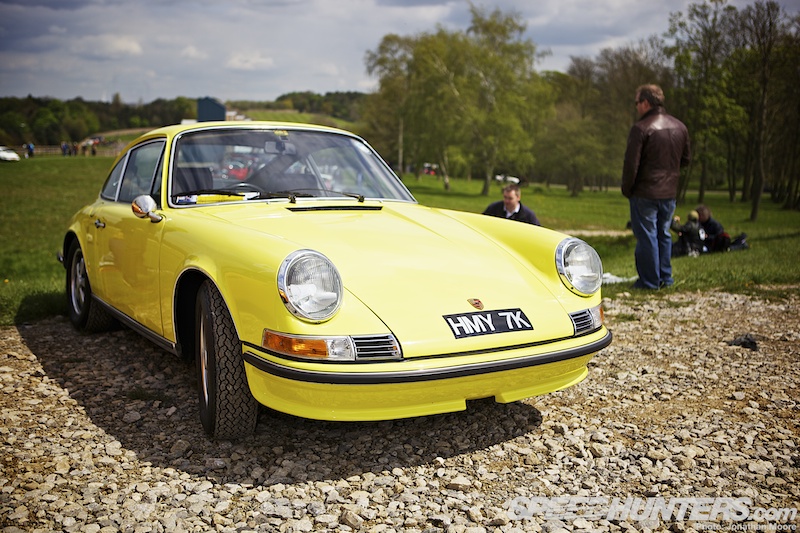
Virtual history lessons were on offer whilst soaking up the club corrals, with cars from the present day side by side with shining examples of their classic antecedents.
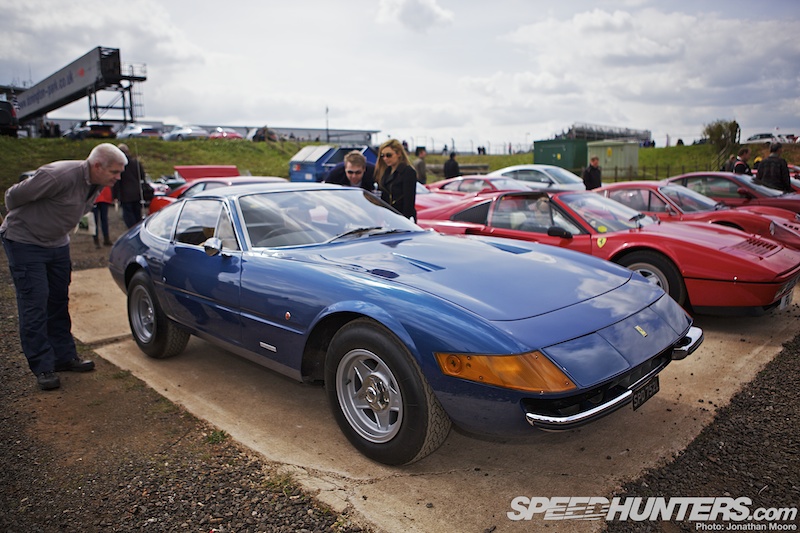
There were plenty of cars that you don’t often see, such as this Daytona…
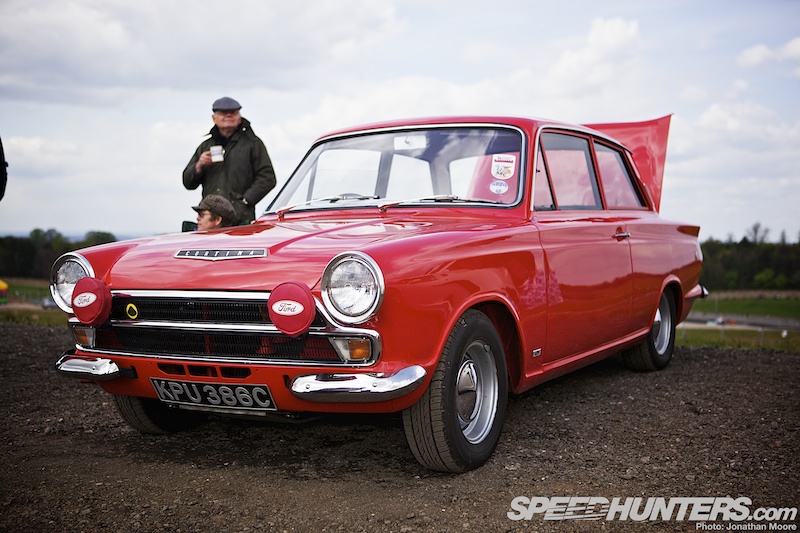
…and others that you don’t see often enough. I’ll take a good look at the joys of the car club areas in a following story.
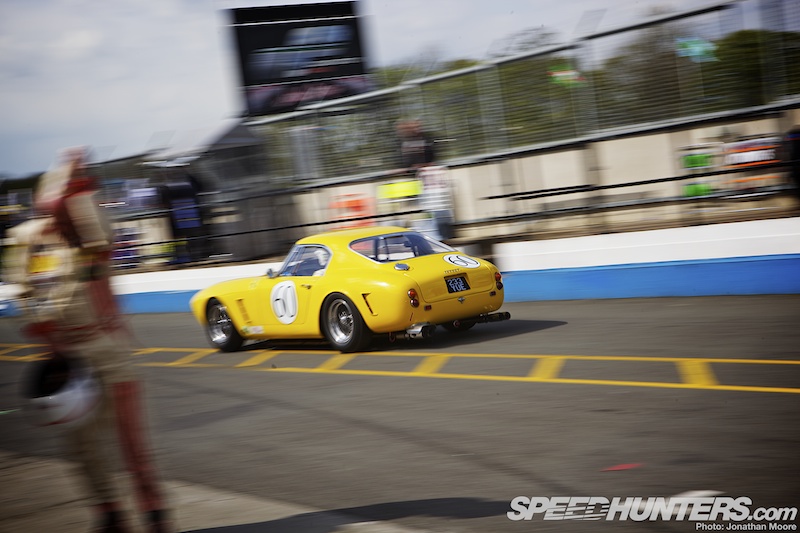
I’ll also be taking a look at the great racing that took place around this legendary circuit, with a special concentration on a particular favourite of mine and many others – the Group C cars.
Jonathan Moore






God that E type in the opening shot....
love that Red Cortina
Mmmmm, group C...
Wallpaper that e-type
what a stunning event...well reported by Jonathan.
Old horses never die !!!
more pls
Oooohhhh... ahem. erm... wow. Bookmarked for future quickies. ;-0
the things i would do to have that e-type in the first picture as my wallpaper...
Great write up and photos, although they do make it look a lot warmer than it actually was at times!
Beautiful work. Love the classics coverage, these machines are so raw.
Was a fantastic event, shame I could only go along myself on the (much wetter!) Saturday, but was still brilliant racing and some seriously good cars in the pits and car clubs.... May have not been there on the Sunday but there was a mint Shelby Daytona Coupe...